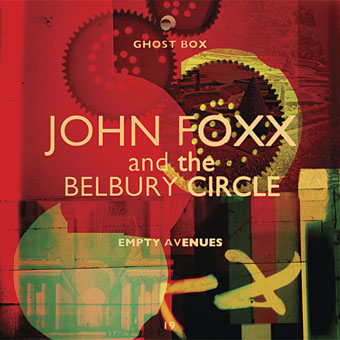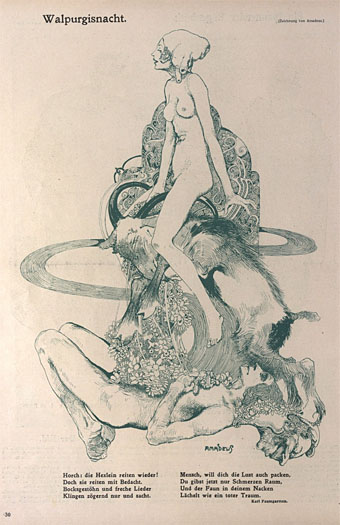The Julian House cover art for the forthcoming collaboration between John Foxx and Belbury Poly (here renamed) has been revealed. Single no. 9 in the Ghost Box Listening Centre Study Series is now available.
• In addition to new Ghost Box records there’s more Hauntological (for want of a better term) cinema on the way this summer with the DVD/BR release of Ben Wheatley’s A Field in England. The potted description at Movie Mail is “a monochrome psychedelic trip into magic and madness set during the English Civil War”. Julian House has made a trailer. Meanwhile at Fangoria, there’s a PIF mixtape from The Advisory Circle. This accompanies an interview with John Krish, director of the most bizarre of the UK’s many strange and alarming public information films from the 1970s.
• More mixes: The hour-long OH/EX/OH show for The Geography Trip on Chorlton FM. “Expect slumber / tension / euphoria in almost equal measures.” It’s marvellous. At Self-Titled mag there’s DJ Food with O Is For Orange: Boards of Canada, Broadcast, The Books, etc.
• Tangiers is a computer game based on the fiction of William Burroughs. Jim Rossignol talked to Alex Harvey about the development of the project.
Walpurgisnacht (1917) by Amadeus. A drawing that could easily be from the late 1960s. If anyone knows the full name of the artist, please leave a comment. Via Beautiful Century.
• Rebecca J. Rosen asks “What would the night sky look like if the other planets were as close as the moon?”
• The mystery of Charles Dellschau and the Sonora Aero Club.
• The Surreal Cave Paintings Of Stockholm’s Metro Stations.
• At 50 Watts: More strange art from Marcus Behmer.
• Ry Cooder in 1970. Directed by Van Dyke Parks!
• The Post Office Tower: now you see it…
• At Little Augury: 99 Meninas.
• Sartori In Tangier (1982) by King Crimson | City Of Mirage (2010) by John Foxx



Definitely going to keep my eye on that Tangiers game. Interesting and well-suited that it should take influence from Thief. Both the worlds of Thief and and those of many of the surreal luminaries that Tangiers’ developers are also incorporating ideas from, are situated in dark, unpredictable urban wildernesses. One major difference being that Thief was far more symbolist in its ideas, approach, and aesthetics as opposed to post-modern surrealist.
Also happened upon yet another, again very symbolist-oriented, tumblr site. If you’ve never seen this one before hopefully you’ll enjoy.
http://ancient-serpent.tumblr.com
Gods below, Tangiers is exciting! I don’t even like video games anymore–they baffle me–but the idea of playing a Burroughsian one is too tantalizing. It’s very quiet and downplayed, though, rather than a Wild Boys or Naked Lunch type of carnival.
I’ve wondered what a full-on Interzone game would be like, whether video or live roleplay. It intrigues me that Lovecraft has spawned just about every entertainment experience one can think of, but Burroughs remains thoroughly untapped for things like comics and gaming. His estate’s influence, perhaps?
Thanks, Wiley. Pinterest has also become a pretty good source now that more people are using it. Best to start with a general search then see where that leads.
Evan: I don’t imagine the Burroughs estate is dictating anything unless Burroughs actual texts are used, as with their removal from the recent Ah Pook book. At a guess I’d say any lack of Burroughs-type imagination (or similar) in games is for a number of reasons:
1) Games are increasingly expensive to produce, with the larger games having movie-style production teams crafting the things. As in the film world, this obviously limits the risks anyone is prepared to take.
2) The games world, like the Anglophone comics world, has been in thrall for years to Hollywood’s generic story structures and character types. Once again that limits the kind of scenario that will be deemed acceptable. And like the Anglophone comics world, the games world still struggles to free itself from being perceived by the wider media as being solely for kids. So violence is fine but where are the alternative sexual scenarios that we’ve seen for decades in science fiction?
3) Then there’s the games audience itself. If the male players who comprise the bulk of the audience have a problem with female games journalists (they do; it’s ridiculous), and routinely berate each other as “fags”, I’d guess that once again you’d have a hard time pushing anything unusual in their direction.
So it’s not impossible, just an uphill struggle as it always is if you want to push the boundaries. It’s easier to do this in media that don’t require substantial amounts of money from the outset.